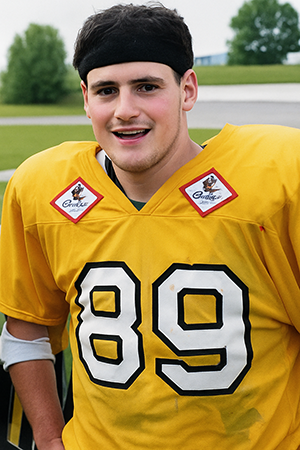John Hartley: From Sheffield to the States – A Pioneer of British Youth Football
Interview by britballhistory.co.uk
Introduction
It feels only fitting that the very first interview for britballhistory.co.uk is with someone who was there at the very beginning of the British youth game—and kept going where no one else had. John Hartley was part of the first-ever U19 kitted championship in the UK, scoring the opening touchdown in the inaugural British Youth Bowl. He went on to represent Great Britain in the country’s first U19 international game, and then made history again as the first known player to progress from the British youth ranks to play college football in the United States. His story is not just about individual achievement—it’s a window into the grassroots birth of a sport in Britain.
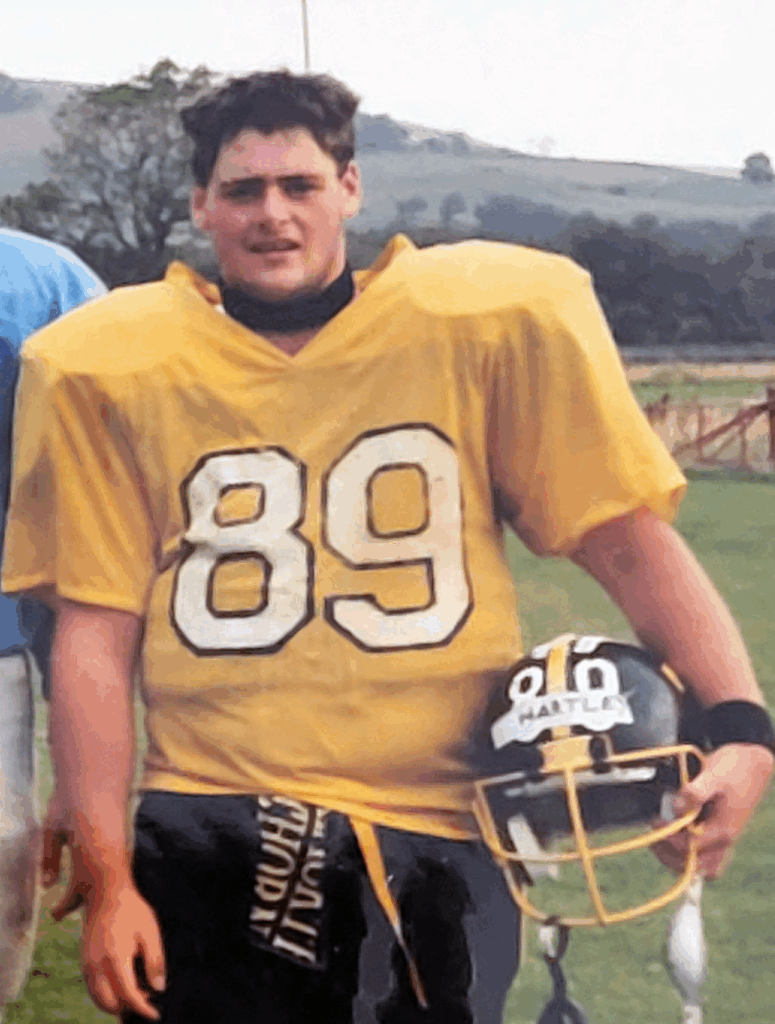
“Like everyone else in the ’80s, I found it on Channel 4…”
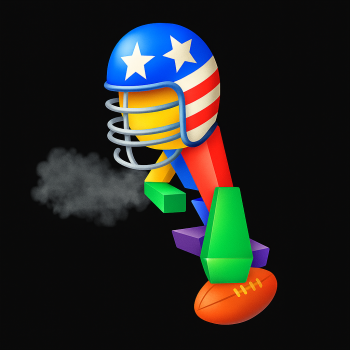
Like most people in the UK back in the ‘80s, I first discovered American football through Channel 4’s Sunday night NFL coverage. I was hooked after watching the 1984/85 season and told my dad I wanted to play.
Sheffield had a senior team at the time—the Giants—but no junior setup. So we trained with the senior squad until the Sheffield Titans were formed. Our first year was flag football, since the league didn’t allow juniors to play contact. But that changed in 1988 when we joined the first-ever kitted youth league.
Building the Titans
We trained every Sunday and usually once or twice during the week. Practices were in a park next to the Sheffield Wednesday ground—it was often full of dog mess, and we sometimes had to climb the fence to get in. We were always short on players, and getting people to show up was a challenge, but the sessions were well-organised.
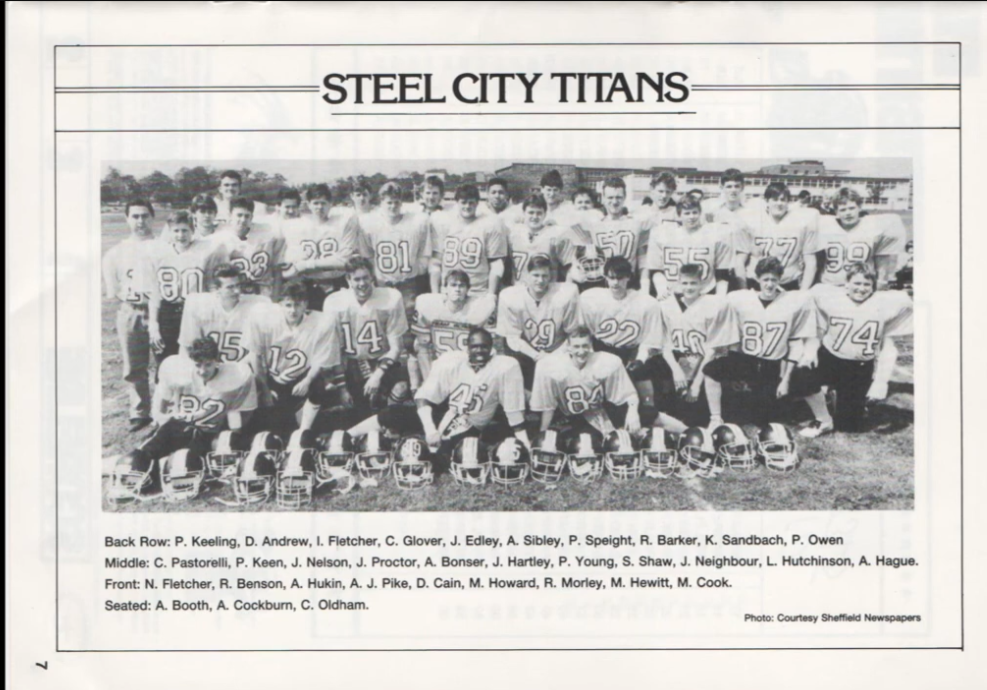
We’d start with fitness, then move to drills—mostly offense, since we never had enough players to run both sides properly. Andy Smith and Carlos Pasterelli from the Giants were great coaches. Tony Owen handled the organisation, and eventually my dad took over as head coach. That was the best part for me—we ran the offense together. We used a three-running-back set, and I rotated between tight end and fullback. We passed a lot for junior football back then. A couple of American players from the Leeds Cougars even came down to coach us. They showed us loads.
The First Youth Bowl
Our first full-contact game was against the Holywell Heroes. We’d been practicing in pads for ages, and it felt unreal to finally play. We didn’t fully know what we were doing, but we had a great time and a great team. We beat them—and then faced them again in the final.
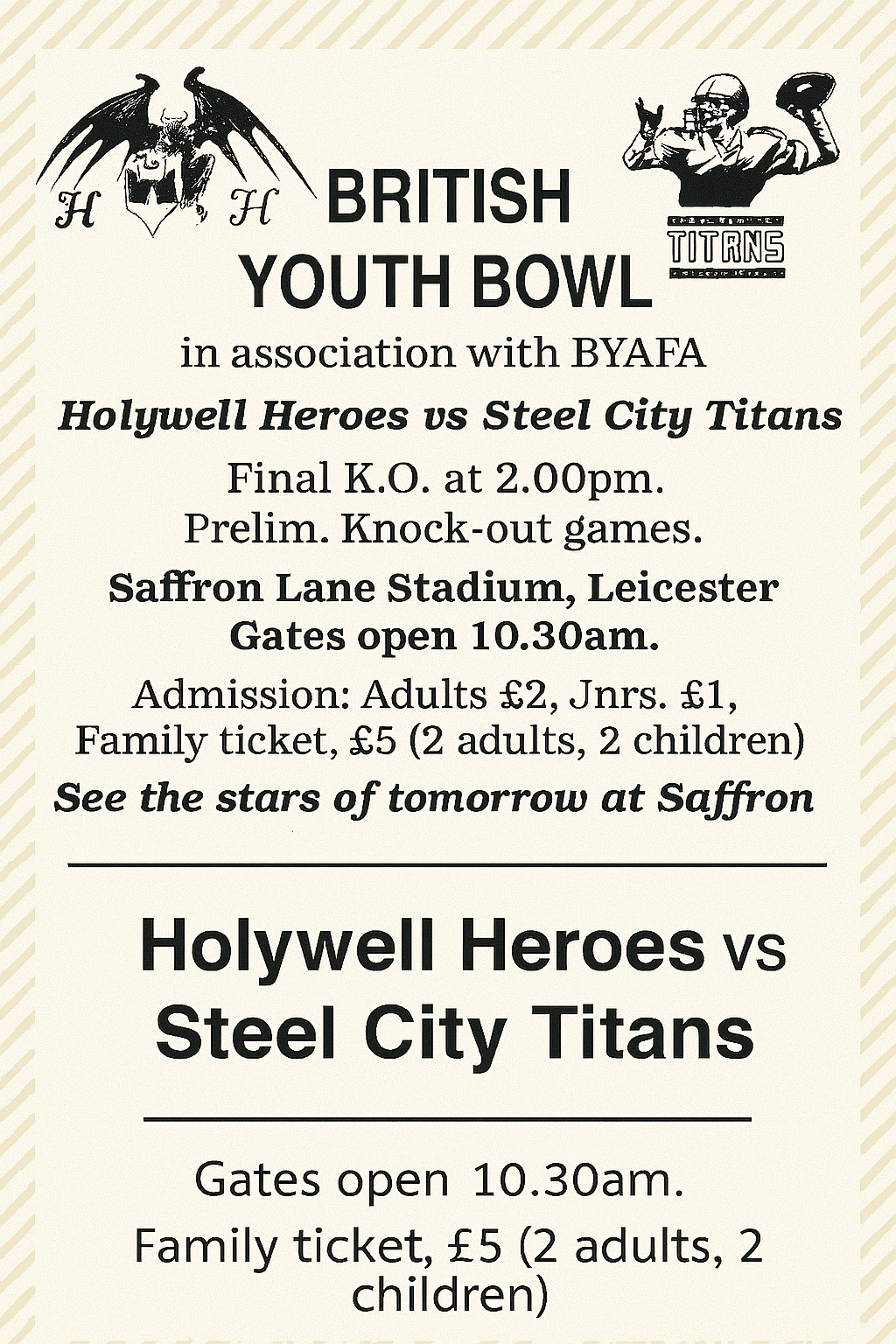
That final, held at Saffron Lane Stadium in Leicester, is one of my best memories. It was the first of its kind in the UK. Playing under those conditions—hard hits, turf burns from the old astroturf, and the pressure of being part of something brand new—was unforgettable. I caught several passes and scored the first-ever touchdown in a British youth championship. We never thought we could lose. There was definitely a rivalry with Holywell, but funnily enough, we ended up playing alongside a lot of their players for GB teams later on.
Forming the Great Britain Crusaders
To be honest, I don’t remember much about the selection process. We were just told at the end of camp where we’d be playing and what string we were. The Crusaders were started by my dad, Tony Owen, and two Americans—Norm Killian and Tom Anderson from Wisconsin. It was the UK’s first proper attempt at forming a national youth team.
That first camp was… different. We stayed in a youth hostel and had to take a coach out to a field in the middle of nowhere every morning. Sometimes we had to chase sheep off before practice. We trained twice a day and had meetings in the evenings. No one had done anything like this before.
The camaraderie was great—total chaos at times. Some lads slept in their helmets because people were shaving off eyebrows in the night. And of course, we’d sneak off to the pub or chippie when we were meant to be in our rooms.
First Game vs USA – And the First Crusader TD
Our first game was in Derby. It rained all day and the pitch was a mud bath. We wore red shirts—borrowed from Manchester, I think—but we didn’t have enough. I scored the first touchdown for the Crusaders and had another one called back. We lost, but it didn’t matter. It was an amazing experience. The American players stayed with English families, and we all bonded. I think we even took them to the pub the night before the game to try and slow them down… didn’t work!
The U.S. Experience
The following year the Crusaders camp was much more organised. We trained at a college and stayed with host families in Wisconsin. We practiced once a day and even went to school with our host kids—it was a full-on American high school experience.
That game had the biggest crowd I’d ever played in front of. It was a night game with bands, TV cameras, commentary, matching uniforms—it felt like something off Channel 4. Mick Luckhurst came into the locker room to interview us. We were on Channel 4 and even got shown in the U.S.
I played tight end and caught a lot of passes, but we lost. The coaches had us running a “run and shoot” offense, which didn’t really suit us. When they kept it for the following year and I realised there was no tight end or fullback in that system, I moved over to defense and played defensive tackle.
That decision changed everything. Coaches from Lakeland College saw me play and offered me a spot. I moved to middle linebacker and played four seasons in the U.S.—from September to spring each year, then came back to the UK to play during the summers.
College Ball: Life in Wisconsin
I remember my junior year most. That was my best season—I got Honorable Mention and was mainly known for stuffing the run up the middle.
Playing in Wisconsin winters was brutal. You’d sweat into your cheek pads, and then they’d literally freeze into solid ice. The biggest barrier was just being a foreign player. Some people didn’t think a Brit should know how to play football. And the Yorkshire accent? People either loved it or hated it.
There wasn’t much English TV over there back then—just Monty Python and Benny Hill. I even had to translate episodes of The Young Ones for a group once!
It was hard, especially academically. You had to maintain a C average to stay eligible. It was classes all day, then practice in the late afternoon. But it was worth it.
Legacy & Reflection
What I want people to remember most is just how much fun we had trying to learn this crazy new game. The friendships we made, the rivalries that pushed us forward—and the fact that without us watching those early Channel 4 broadcasts, American football might have just been a passing fad.
If anyone deserves recognition for what youth Britball became, it’s my dad, Bill Hartley, and Tony Owen.
My dad went from knowing absolutely nothing about the sport to being roped into coaching. He helped build one of the most successful youth teams in the country, won the first kitted Youth Bowl, was named head coach of the first GB youth team, then coached the second, and became the first to lead a GB team to a win over the USA. Later, he coached multiple senior teams including the GB Spartans.
And Tony? Without Tony Owen and my dad, youth kitted football in the UK wouldn’t have existed. They fought hard against most of the country at the time—people who believed kids should only play flag. They helped set up the first kitted league. The rest is history.
📸 Gallery: 1988 British Youth Bowl & Crusader Era
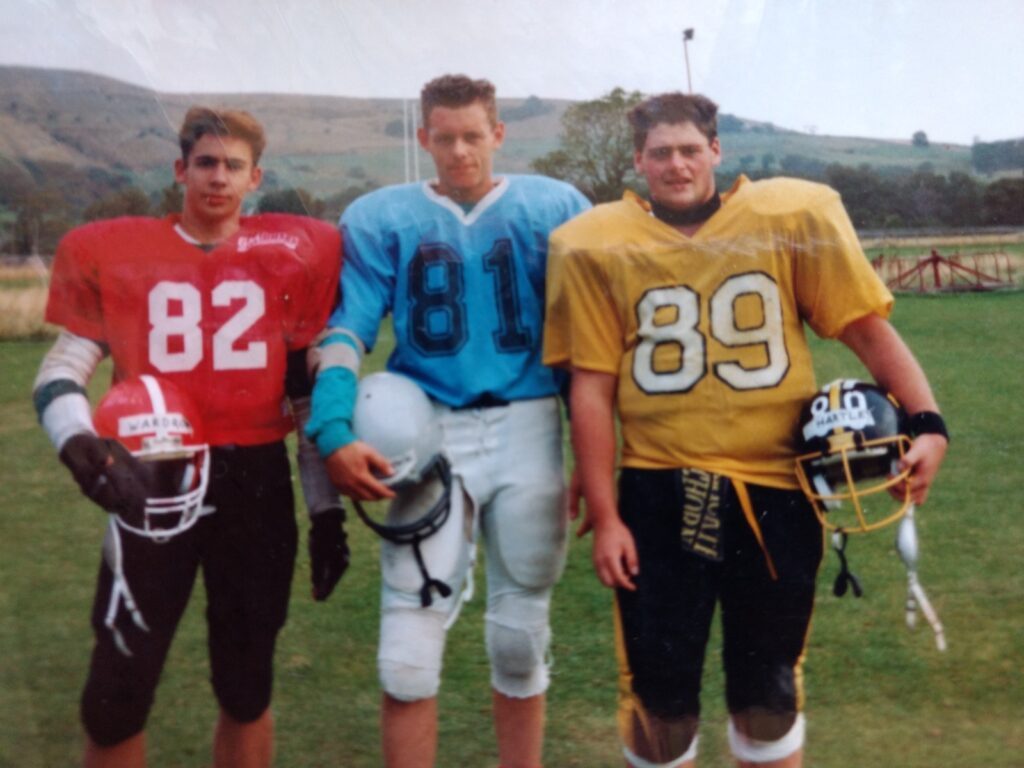
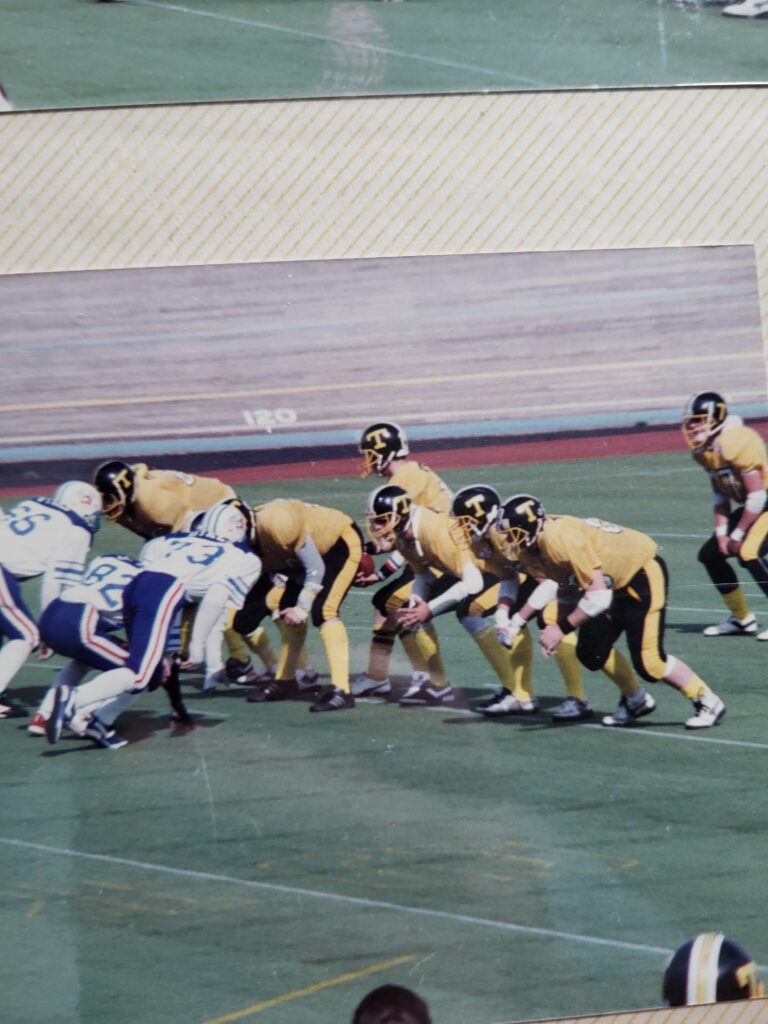
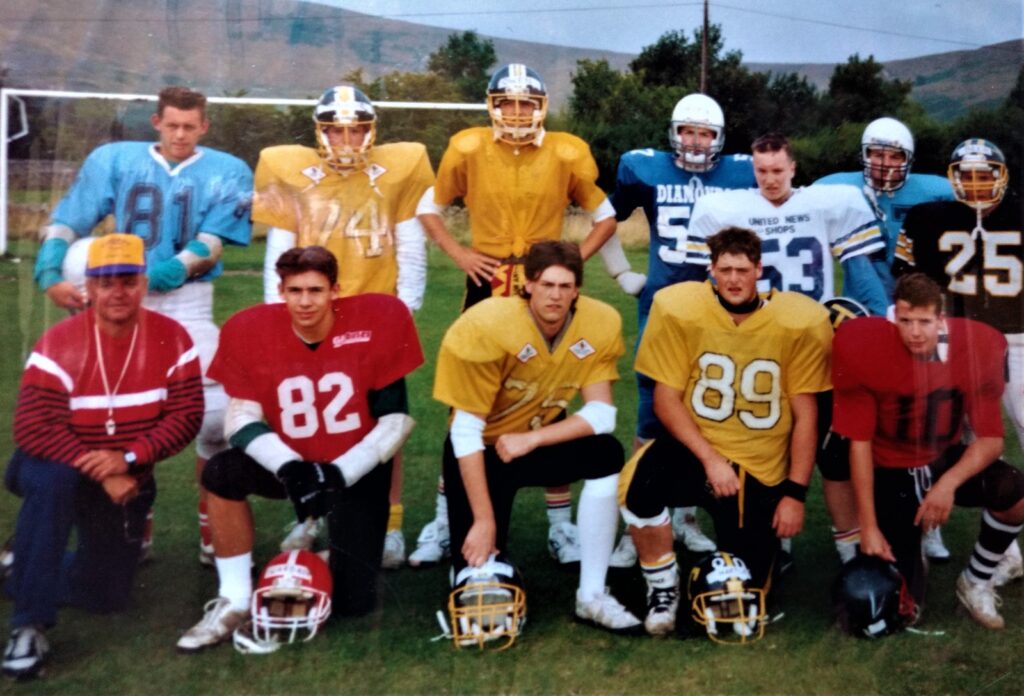
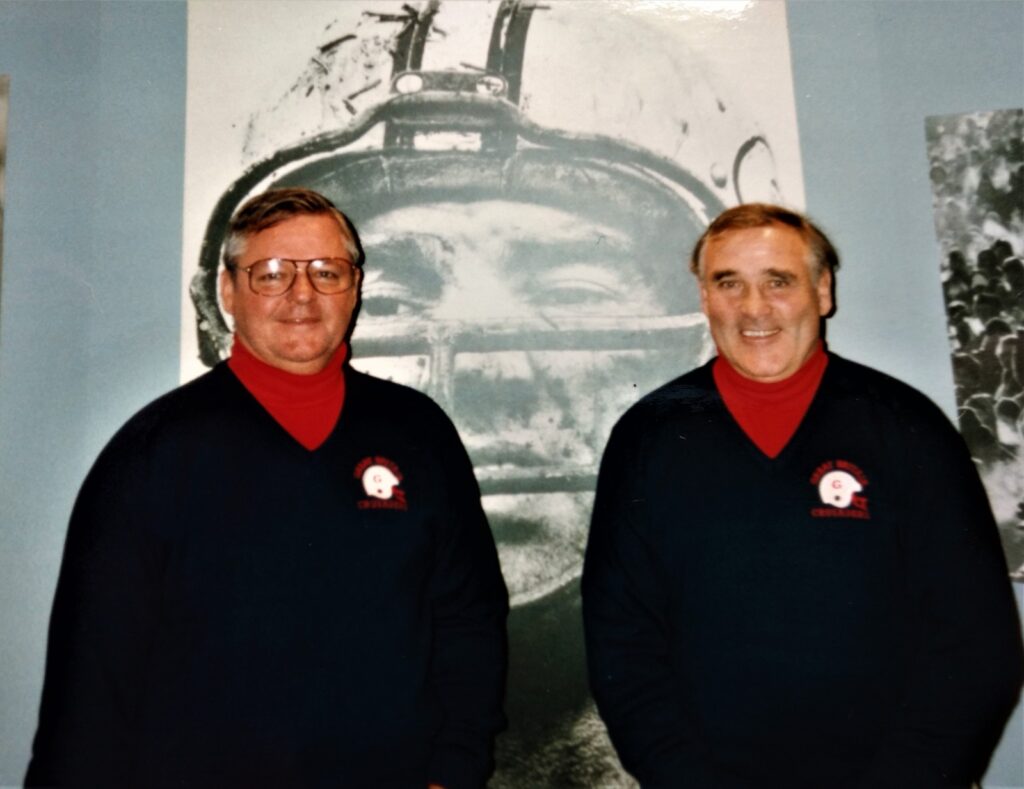
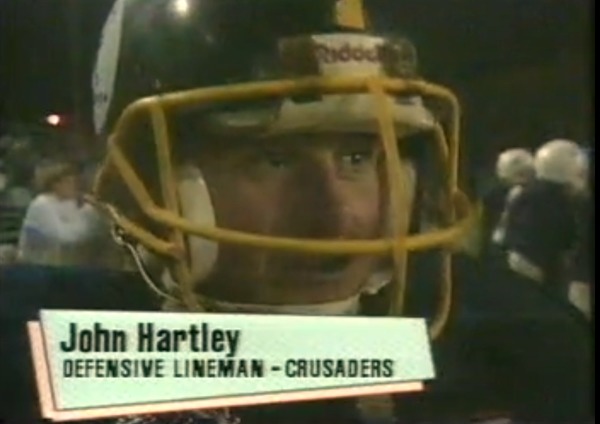
💬 Were You There?
Do you remember the first British Youth Bowl? Were you part of the Crusaders camps or those early GB teams? We’d love to hear your memories, see your photos, or even feature your story.
📩 Get in touch via the contact form

